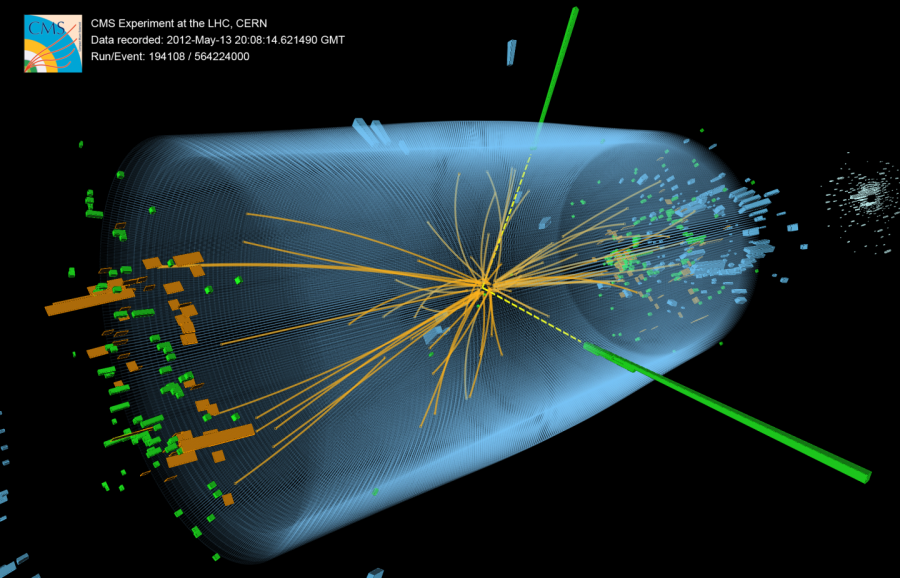Physicists Discover the Decay of Higgs Bosons After Six Years
September 23, 2018
Students have been taught in schools that electrons, protons, and neutrons are the smallest units of matter, but physicists have been observing even smaller particles for decades. Protons are not fundamental particles. In fact, protons are made of particles called quarks and there are approximately three of them in one proton. These quarks come in different “flavors,” meaning they have different properties in terms of their mass and energy. Although these quarks are very small, the masses of different quarks vary quite a lot. The lightest quark, the up quark, is approximately eighty times lighter than the heaviest particle, the top quark. Why is there a huge gap in the masses of these tiny particles? What creates mass in the first place?
The solution to these questions was answered almost six years ago when physicists discovered something extraordinary. On July 4th of 2012, the discovery of the Higgs Boson particle lit up sparks in the physics community. It turned out that the mass of these tiny, fundamental particles was caused by interactions with the Higgs Boson. The Higgs Boson produces a field known as the “Higgs field” and is the reason why everything in the universe has mass. Different particles interact differently with the Higgs field, and as a result, vary in mass. Imagine the Higgs field as a smooth floor and the particles as different objects with different amounts of friction. The up quark will be analogous to a marble since it is extremely lightweight and moves across the floor with relative ease. Now imagine the same marble but instead of it being made out of glass, it is made completely out of rubber. The normal marble will predictably move more quickly than the one made of rubber. The concept of friction in this scenario is comparable to the Higgs field since the floor is what determines the speed of the marble, similar to how the Higgs field determines the mass of particles.
The Higgs Boson is still a mystery to physicists; its properties are far from being fully understood. One of the most sought-after observations physicists have yearned for is the decay of the Higgs Boson, and they finally were able to achieve this goal on August 24, 2018, when they discovered the decay. Since most subatomic particles are heavy, they are unstable and decay into even smaller particles. These large particles are sort of like Jenga buildings; the taller the building becomes, the more likely it will collapse into smaller bricks. The reason why physicists search for these decays is to test the accuracy of the Standard Model. The Standard model is essentially a periodic table for subatomic particles and has described some of the most fundamental behaviors of these particles. The Standard Model has predicted many phenomena through its intricate patterns, similar to how Dmitri Mendeleev left undiscovered elements as gaps in the Periodic Table and was later able to fill in these gaps with great precision once the predicted elements were discovered. This is essentially what the Higgs Boson decay tells physicists, and although it isn’t as thrilling as the discovery of the particle itself, it is a good indication of what is to come in the physics community.


















































































































































